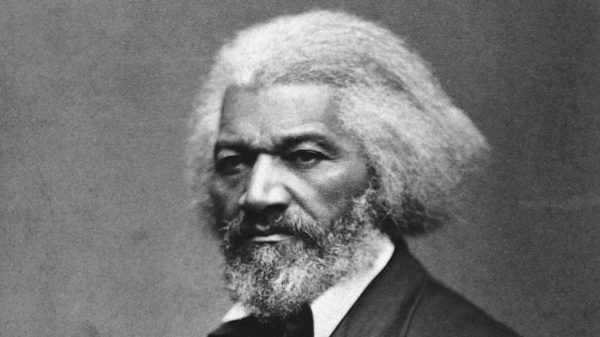A statue of famed abolitionist Frederick Douglass in upstate New York was snatched off its base on Sunday, the anniversary of his famous “What to the Slave is the Fourth of July” speech.
The statue stood at Maplewood Park in Rochester, New York, a site that was once part of the Underground Railroad, reported The Associated Press. The sculpture was eventually recovered near the Genesee River gorge, about 50 feet away from its pedestal. Rochester Police said it “had been placed over the fence to the gorge and was leaning against the fence” by the river.

Sunday marked the 168th anniversary of Douglass’ famed speech in which he highlighted the hypocrisy of the United States celebrating its independence while slavery was still practiced. The speech was given on July 5, 1852, in Rochester, where he spent about three decades of his life. He is also buried in the city.
“What, to the American slave, is your 4th of July?” Douglass said. “I answer, a day that reveals to him, more than all other days in the year, the gross injustice and cruelty to which he is the constant victim. To him, your celebration is a sham.”
The base and lower part of the statue were damaged beyond repair so the whole piece must be replaced, as reported by The Democrat and Chronicle. A finger on the statue’s left hand was also damaged. The timing of the vandalism is “particularly painful” to Carvin Eison, who led the initiative responsible for the statue’s installation. However, he wants to replace it as soon as possible to send a message to the vandals.
“I feel to put a monument back here immediately so whoever did this know that we are not going to be deterred from what our objective is and our objective is to continually celebrate Frederick Douglass,” Eison told WROC.
“They can topple over this monument, they could go topple over all of them, this monument will still stand because the ideas behind it are bigger than the monument.”
No suspects have been identified in this act of vandalism, unlike in December 2018 when two white college students were charged with ripping down a Douglass statue in another part of the city. That statue was replaced within a week, and the pair pleaded guilty to criminal mischief charges the following April.
Sunday’s act of destruction marked the the second time in recent weeks in which an abolitionist statue was torn down. On June 23 in Madison, Wisconsin, demonstrators protesting the arrest of a local Black activist pulled down a statute of Hans Christian Heg from in front of the Wisconsin State Capitol, where it had stood since 1925. Heg was an anti-slavery activist in Wisconsin in the years before the Civil War and later died fighting the Confederates during that conflict.


